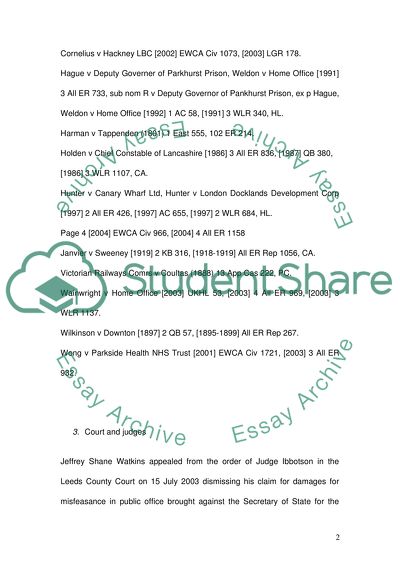Cite this document
(Tort Law: Analysis of Watkins v Secretary of State for the Home Case Study, n.d.)
Tort Law: Analysis of Watkins v Secretary of State for the Home Case Study. Retrieved from https://studentshare.org/law/1535688-tort-law-write-a-case-note-on-watkins-v-secretary-of-state-for-the-home-department-and-others-2004-4-all-er-1158
Tort Law: Analysis of Watkins v Secretary of State for the Home Case Study. Retrieved from https://studentshare.org/law/1535688-tort-law-write-a-case-note-on-watkins-v-secretary-of-state-for-the-home-department-and-others-2004-4-all-er-1158
(Tort Law: Analysis of Watkins V Secretary of State for the Home Case Study)
Tort Law: Analysis of Watkins V Secretary of State for the Home Case Study. https://studentshare.org/law/1535688-tort-law-write-a-case-note-on-watkins-v-secretary-of-state-for-the-home-department-and-others-2004-4-all-er-1158.
Tort Law: Analysis of Watkins V Secretary of State for the Home Case Study. https://studentshare.org/law/1535688-tort-law-write-a-case-note-on-watkins-v-secretary-of-state-for-the-home-department-and-others-2004-4-all-er-1158.
“Tort Law: Analysis of Watkins V Secretary of State for the Home Case Study”, n.d. https://studentshare.org/law/1535688-tort-law-write-a-case-note-on-watkins-v-secretary-of-state-for-the-home-department-and-others-2004-4-all-er-1158.


